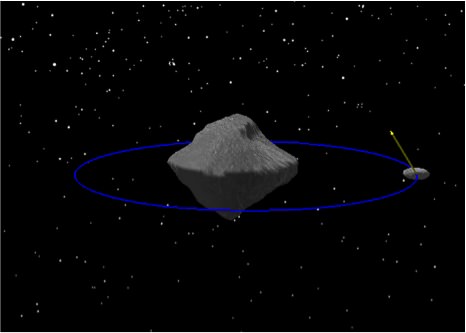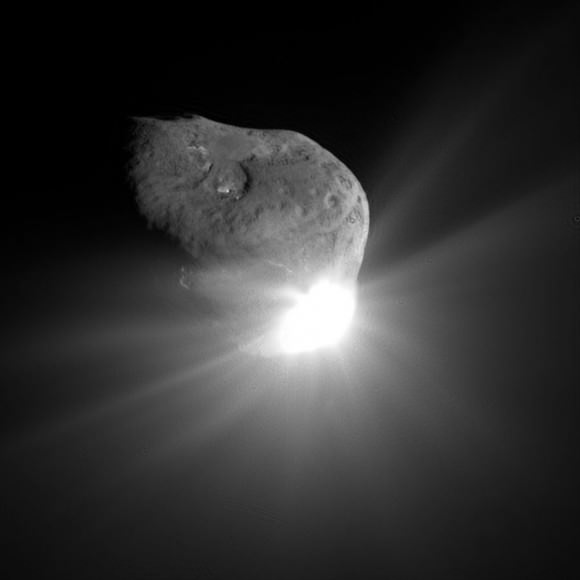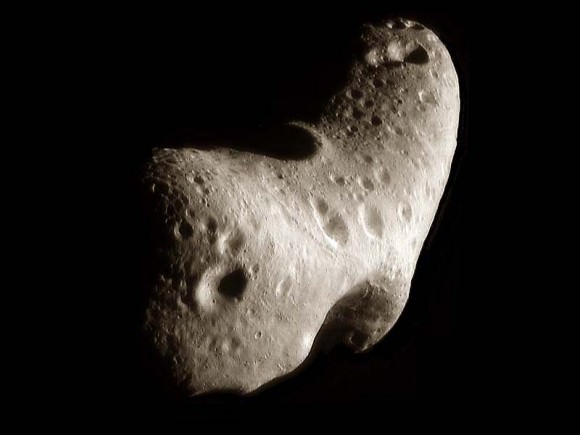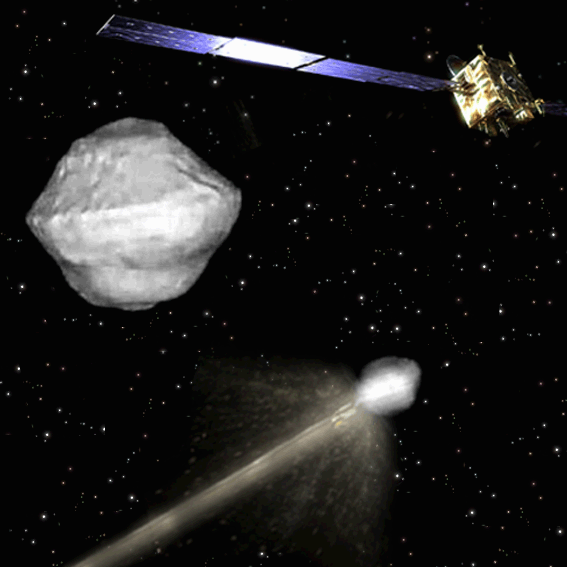Planetary Defense is a concept very few people heard of or took seriously – that is until last week’s humongous and totally unexpected meteor explosion over Russia sent millions of frightened residents ducking for cover, followed just hours later by Earth’s uncomfortably close shave with the 45 meter (150 ft) wide asteroid named 2012 DA14.
This ‘Cosmic Coincidence’ of potentially catastrophic space rocks zooming around Earth is a wakeup call that underscores the need to learn much more about the ever present threat from the vast array of unknown celestial debris in close proximity to Earth and get serious about Planetary Defense from asteroid impacts.
The European Space Agency’s (ESA) proposed Asteroid Impact and Deflection Assessment mission, or AIDA, could significantly bolster both our basic knowledge about asteroids in our neighborhood and perhaps even begin testing Planetary Defense concepts and deflection strategies.
After two years of work, research teams from the US and Europe have selected the mission’s target – a so called ‘binary asteroid’ named Didymos – that AIDA will intercept and smash into at about the time of its closest approach to Earth in 2022 when it is just 11 million kilometers away.
“AIDA is not just an asteroid mission, it is also meant as a research platform open to all different mission users,” says Andres Galvez, ESA studies manager.
Asteroid Didymos could provide a great platform for a wide variety of research endeavors because it’s actually a complex two body system with a moon – and they orbit each other. The larger body is roughly 800 meters across, while the smaller one is about 150 meters wide.

So the smaller body is some 15 times bigger than the Russian meteor and 3 times the size of Asteroid 2012 DA14 which flew just 27,700 km (17,200 mi) above Earth’s surface on Feb. 15, 2013.
The low cost AIDA mission would be comprised of two spacecraft – a mother ship and a collider. Two ships for two targets.
The US collider is named the Double Asteroid Redirection Test, or DART and would smash into the smaller body at about 6.25 km per second. The impact should change the pace at which the objects spin around each other.
ESA’s mothership is named Asteroid Impact Monitor, or AIM, and would carry out a detailed science survey of Didymos both before and after the violent collision.
“The project has value in many areas,” says Andy Cheng, AIDA lead at Johns Hopkins’ Applied Physics Laboratory, “from applied science and exploration to asteroid resource utilisation.” Cheng was a key member of NASA’s NEAR mission that first orbited and later landed on the near Earth Asteroid named Eros back in 2001.
Recall that back in 2005, NASA’s Deep Impact mission successfully lobbed a projectile into Comet Tempel 1 that unleashed a fiery explosion and spewing out vast quantities of material from the comet’s interior, including water and organics.

ESA has invited researchers to submit AIDA experiment proposals on a range of ideas including anything that deals with hypervelocity impacts, planetary science, planetary defense, human exploration or innovation in spacecraft operations. The deadline is 15 March.
“It is an exciting opportunity to do world-leading research of all kinds on a problem that is out of this world,” says Stephan Ulamec from the DLR German Aerospace Center. “And it helps us learn how to work together in international missions tackling the asteroid impact hazard.”
The Russian meteor exploded without warning in mid air with a force of nearly 500 kilotons of TNT, the equivalent of about 20–30 times the atomic bombs detonated at Hiroshima and Nagasaki.
Over 1200 people were injured in Russia’s Chelyabinsk region and some 4000 buildings were damaged at a cost exceeding tens of millions of dollars. A ground impact would have decimated cities like New York, Moscow or Beijing with millions likely killed.
ESA’s AIDA mission concept and NASA’s approved Osiris-REx asteroid sample return mission will begin the path to bolster our basic knowledge about asteroids and hopefully inform us on asteroid deflection and Planetary Defense strategies.



I think many people in the science sector takes impactor effects seriously. That is why the catastrophism it routinely evokes in the media is a problem, it doesn’t promote a serious consideration.
For example, the appearance of individual impactors does not underscore the risks that remains the same. It provokes a social emotional response certainly, so it can be helpful that way, as opposed to be taken seriously.
If we institute means of mitigating impactor effects, it would importantly be the 2nd nature catastrophe we moot (after the previous ozone layer thinning). It would be an important showcase that we can do these things, instead of being helpless against these catastrophes.
But as for risks to society, these things comes way below the current killers such as smoking and malaria. We can, and should, do these things concurrently. But our priorities should be set accordingly. Some will promote this, others will promote other mitigation. I’ll put my pennies on malaria.
Well, well, well, ..look who showed up? The Lost Nors’man Atheist. How are you? You must come join us here at M.I.T for a visit Tor. You’d be delighted with the research on comets/asteroids and the means to disarm their danger. Don’t worry, we will not mention the Creator. You couldn’t handle it anyways. But the comet/asteroid you’d enjoy. Come and see? …Me
Has anyone studied if the NASA Deep Impact Mission has changed the trajectory of that comet?
I am worried about that, too.
Yes, the closer it comes the brighter it will be!
Changed by about 10cm…
http://en.wikipedia.org/wiki/Deep_Impact_%28spacecraft%29#Media_coverage
This isn’t a binary universe where everything is either coming at us or not, it’s one where things move in a virtually infinite number of trajectories, only a very small subset of which will bring them to us. Deep Impact changed from one harmless trajectory, to an infinitesimally different harmless trajectory.
And given the radio of the object’s masses, this should come as no surprise…
if we keep pissing off these asteroids, there will be consequences!
More of them have hit us, than the reverse…
I just wonder why the sudden increase of terrestrial close calls and impact/atmosphere explosions all the sudden. Seems like for years there was nothing of note, just the usual meteor showers, now in just no time the increase is dramatic… No I am not a conspiracy theorist just curious.
The estimated 100-year event in Russia last week was the biggest since Tunguska 108 years ago, so no more than would be expected, but apart from that our detection of these things has improved so much. A number of the big rocks that used to float past unnoticed are now spotted and followed. Not only that, but I suspect that public interest and therefore awareness is also higher today than it was in the past. These things are on the 24-hour news channels now when they might not have merited a mention on the bulletins before.
Just a few possibilities.
I’m worried about the possibility of a close asteroid hitting one of our satellites and getting deflected towards Earth instead of passing us by harmlessly. that would need to be thrown into the mix. I have heard of nothing being done about this.